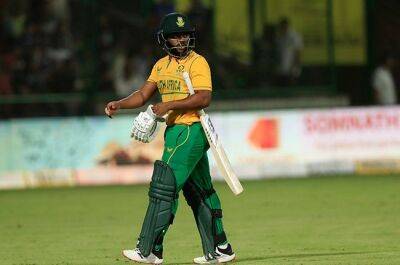Has in-game coaching changed tennis at the US Open?
To the casual tennis fan, there’s likely a sense that the US Open has looked and felt different this fortnight from prior years. And that impression would be entirely accurate. Aside from the return of full attendance in Flushing Meadows following the Covid intrusion upon all live events in 2020 and 2021, several rule changes implemented over the last 13 months have changed the look, action and rhythm of the competition.
In 2020, Novak Djokovic was defaulted in the first set in his fourth-round match against Pablo Carreno Busta when, in a moment of intense frustration, he smacked a ball away, hitting a lineswoman in the neck. His tournament came to an immediate halt.
If Djokovic had received his Covid vaccine and was at the Open this year, he wouldn’t need to worry about a repeat infraction. The reason: there are no longer linespeople at the US Open, as all calls are now handled electronically. This has undoubtedly been a positive development, save for the not-insignificant downside of fewer jobs in the sport. The lack of interruptions with the absence of player challenges has been a welcome change, allowing a match to proceed unimpeded.
In that same year of 2020, Dominic Thiem rallied from two sets down (the first time that had been accomplished in the final since 1949) to defeat Alexander Zverev in an extended fifth-set tiebreaker, 9-7. But this year that wouldn’t be enough, as the US Open has joined the other slams, and now requires a 10-point tiebreak in deciding sets. Again, this is a wise altering of the rules. When a match comes down to a fifth set (or third set for the women), a seven-point tiebreaker has always felt abrupt. Adding several points allows a match to proceed to its more organic conclusion and






